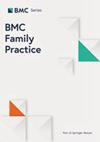Statin use for cardiovascular disease prevention: perceptions among people living with HIV in the United States
IF 3.2
3区 医学
Q1 MEDICINE, GENERAL & INTERNAL
引用次数: 0
Abstract
People living with HIV (PLWH) may be at heightened risk for cardiovascular disease (CVD). Statin use and lifestyle changes reduce the risk of CVD but remain under-prescribed among PLWH. The objective of this study was to characterize knowledge of CVD and statin use, current usage, barriers to taking statins, and information desired by PLWH to improve statin uptake among PLWH in Los Angeles, CA. Between April 2019 and April 2020, we conducted four focus group discussions (n = 37) with patients across three public community health clinics that serve PLWH in Los Angeles County, California. All clinics participated in a larger study to improve statin prescribing for PLWH. We asked about knowledge of statins, willingness to take a statin, possible barriers to statin usage, preferred information sources for health information, and desired information about statins. We utilized standard qualitative content analysis methods to identify themes. We found a range in the awareness of statins, with some participants reporting never having heard of statins while others had a history of statin use. There were concerns about the potential long-term effect of statin use, but participants expressed willingness to use CVD medications generally and statins specifically, especially if recommended by their healthcare provider. Participants also expressed interest in potential alternatives to statin usage such as exercising regularly and nutritious eating. More interventions are needed to increase statin use among PLWH to improve CVD outcomes, which also has implications for HIV progression. Clinics should aim to increase patient and provider knowledge about CVD risk and statin use for PLWH and provide shared decision-making tools that are easy to use and culturally appropriate.使用他汀类药物预防心血管疾病:美国艾滋病毒感染者的看法
艾滋病病毒感染者(PLWH)罹患心血管疾病(CVD)的风险可能会增加。他汀类药物的使用和生活方式的改变可降低心血管疾病的风险,但在艾滋病病毒感染者中的使用率仍然偏低。本研究旨在了解加利福尼亚州洛杉矶市 PLWH 对心血管疾病和他汀类药物使用的了解程度、目前的使用情况、服用他汀类药物的障碍以及 PLWH 希望获得的信息,以提高他汀类药物的服用率。2019 年 4 月至 2020 年 4 月期间,我们与加利福尼亚州洛杉矶县为 PLWH 提供服务的三家公共社区卫生诊所的患者进行了四次焦点小组讨论(n = 37)。所有诊所都参与了一项旨在改善 PLWH 他汀类药物处方的大型研究。我们询问了有关他汀类药物的知识、服用他汀类药物的意愿、使用他汀类药物可能遇到的障碍、健康信息的首选信息来源以及希望获得的有关他汀类药物的信息。我们采用了标准的定性内容分析方法来确定主题。我们发现,参与者对他汀类药物的认识程度不一,有些人说从未听说过他汀类药物,而有些人则有使用他汀类药物的历史。与会者对使用他汀类药物可能产生的长期影响表示担忧,但他们普遍表示愿意使用心血管疾病药物,特别是他汀类药物,尤其是在医疗保健提供者推荐的情况下。参与者还对他汀类药物的潜在替代品表示了兴趣,如定期锻炼和营养饮食。需要采取更多的干预措施来提高 PLWH 使用他汀类药物的比例,以改善心血管疾病的治疗效果,这对艾滋病的发展也有影响。诊所应致力于增加患者和医疗服务提供者对心血管疾病风险和他汀类药物使用的了解,并提供易于使用且适合当地文化的共同决策工具。
本文章由计算机程序翻译,如有差异,请以英文原文为准。
求助全文
约1分钟内获得全文
求助全文
来源期刊

BMC Family Practice
医学-医学:内科
CiteScore
3.20
自引率
0.00%
发文量
0
审稿时长
4-8 weeks
期刊介绍:
BMC Family Practice is an open access, peer-reviewed journal that considers articles on all aspects of primary health care research. The journal has a special focus on clinical decision making and management, continuing professional education, service utilization, needs and demand, and the organization and delivery of primary care and care in the community.
 求助内容:
求助内容: 应助结果提醒方式:
应助结果提醒方式:


